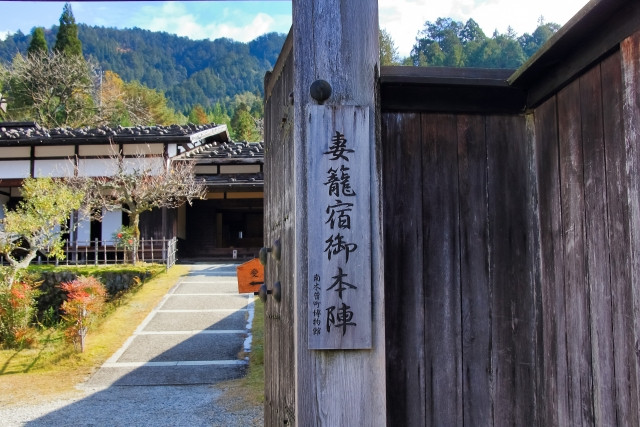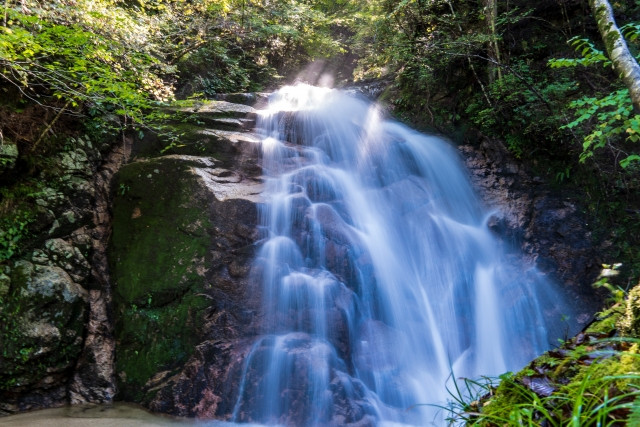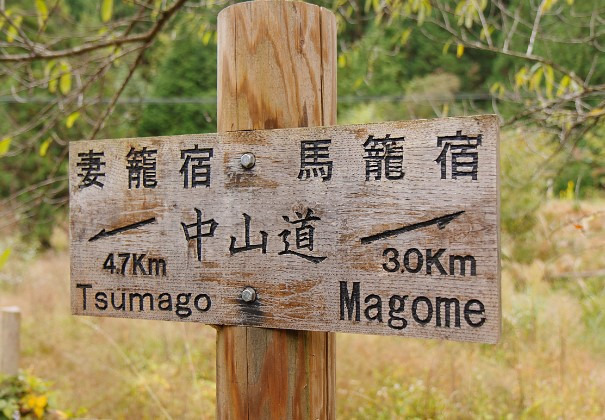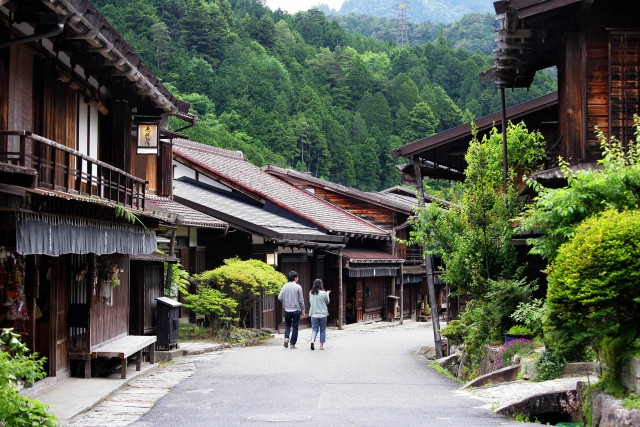Tsumago is a small village that has taken big steps to preserve its traditional buildings and culture including even hiding power lines from view, allowing visitors to experience the atmosphere and history of Tsumago as close to when it was a bustling post town in a developing Japan as possible.
Table of Contents
- Why is Tsumago preserved in Japan?
- Attractions in and around Tsumago
- How to get there?
- In Conclusion
Why is Tsumago preserved in Japan?
Tsumago is a small town in Nagano Prefecture between Kyoto and Tokyo.
It can be described as more like an open-air museum preserving the appearance and tradition of an Edo era post town.
Post towns were places where travelers and messengers used to rest and stay during their journey around the nation. Tsumago was the forty-second of the sixty-nine post towns in between Edo (now Tokyo) to Kyoto, therefore being an important stop in one of the most significant trade routes during that time. And thanks to the preservation of the town, people can still visit it today.

It was actually quite recent that preservation efforts began. In the late 1960s, local residents began to collectively fix-up and preserve the historically significant structures in Tsumago. It now holds the title of “Nationally Designated Architectural Preservation Site” after a good number of buildings were able to be restored and saved.
Now, it is one of the major tourist attractions in Japan, especially for domestic tourists. The locals still follow the preservation methods, with modern developments, buying and selling of historical property being prohibited within the town. Tsumago is also very famous for film and TV shoots.
Writer's Pick
Attractions in and around Tsumago
Tsumago is often visited as part of the walking trail between it and Magome, a nearby post town. Many people start at Magome and walk to Tsumago, often staying there after the trek. If you are visiting or walking the Nakasendo trail, consider visiting the attractions in and around Tsumago. Here we have named a few for you.
The Nagiso Town Museum

The Nagiso Machi Hakubutsukan or Nagiso Town Museum is made up of three parts (If you go to all of them, it costs 700 yen for adults but you must buy the special all-in-one price ticket at the first place you visit):
Tsumago-juku Honjin
Tsumago-juku Honjin or the Tsumago Post Town Honjin was the main inn where the lords and government officials themselves used to stay. It was torn down at one point so it had to be rebuilt in the 1990s as a replica of the former building. It costs 300 yen for adults.
Wakihonjin Okuya
Wakihonjin Okuya is actually part of a former residence of a prestigious family turned into a museum, giving a peek into how the locals lived during the Edo Period. It was the secondary inn for visiting guests not able to stay at the main inn. The entry fee for Wakihonjin Okuya and the following Historical Materials Museum combined is 600 yen for adults.
Historical Materials Museum
In the Historical Materials Museum or Rekishi Shiryokan in Japanese, you will be able to view the history of Kiso Valley where Tsumago is located. They also display the history and artifacts about Tsumago, including preservation efforts.
Kotoku Temple
Tsumago’s temple is a Buddhist temple named Rurisan Kotokuji which was built in the 16th century. It has a very pleasant and peaceful environment, known for its impressive white walls and the amazing view over Tsumago from its location.
Hiking between Tsumago and Magome

As we stated before, Tsumago is a post town on the road between Edo and Kyoto. Thus people still take the trek, stopping along the still existing and preserved post towns. Tourists who are hiking enthusiasts can opt for a short hike of about 8 km from Tsumago to the next post town over, Magome (or the opposite way as many do from Magome to Tsumago). They can relish the beautiful scenery and take time to appreciate the history of each location as well as the trail itself on the way. You can even find waterfalls along the way!
There’s even luggage delivery services between the two towns so you can walk with the lightest amount of belongings during the hike. And if you want to visit but don’t think you can make the hike, or you’d only like to make the hike one way, you can always take the bus that goes between the two towns.
As it’s one of the shorter segments on the Nakasendo trail, it’s quite popular. It’s great for visiting as there will usually be many people on the trail so you’re bound to not get lost. However, if you plan to stay overnight in one of the towns, it’s best to make reservations in advance.
How to get there?

The best way is to first go to Nagoya Station (For example, if coming from Tokyo, then via the Tokaido Shinkansen) then transfer to the Shinano Express for Nagiso Station. You may have to take a local line as not all trains on the Shinano Express stop in Nagiso Station so make sure to check before you get on them.
Then you can take a bus from Nagiso Station to Tsumago with buses running every 15 to 30 minutes, take a taxi or walk for about 1 hour.
Another popular way is to hike or take the bus from Magome to Tsumago. To get to Tsumago, you’d also take the train from Nagoya Station to Nakatsugawa Station.
These are also great day trips from Nagoya, Kyoto, and Takayama (Gero Onsen) if you plan carefully.
In Conclusion

Tsumago is an untouched and well-preserved town in Japan, known as one of the best. If you are interested in exploring and seeing traditional Japan in a different way and location than the better-known attractions, then you must visit Tsumago. Just bring some good walking shoes!









.png)



















